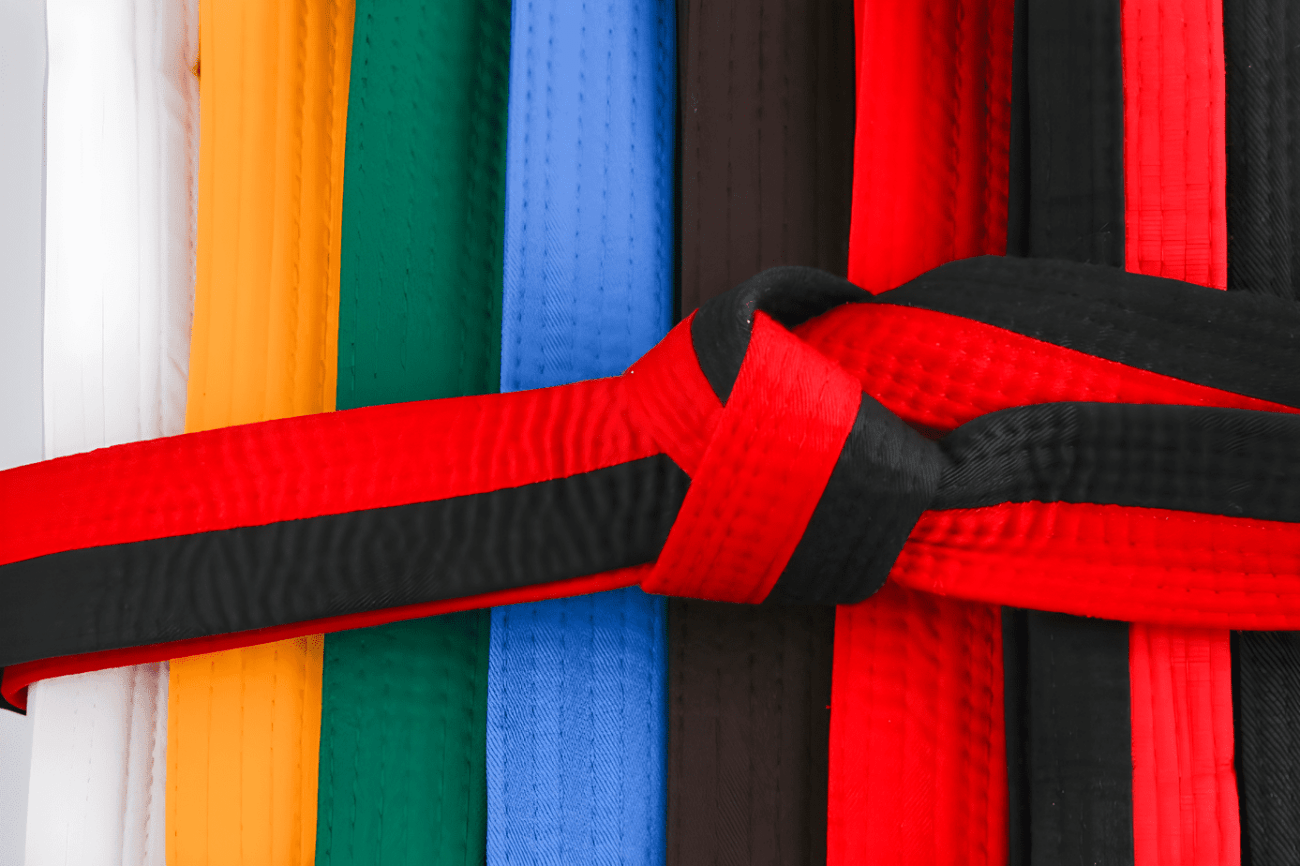Article updated November 25, 2023
How many belts are in one of the most popular Japanese martial arts? The correct answer is – there are nine belts in Karate. The colors of Karate belts are as follows:
- White belt – The beginner who has just arrived gets a white belt. This is the colour of purity and innocence, in a cultural sense.
- Yellow belt – You have some basics. Yellow is the symbol for light, or an open mind that is willing the learn.
- Orange belt – Basics are mastered. Your knowledge is expanding, like sunlight from yellow to orange.
- Green belt – Green is the colour of growth. Some moves have been mastered and some principles are engrained at this point.
- Blue belt – The student has mastered the basics and principles, and now works on speed and precision. The colour of the sky.
- Purple belt – Taking from 1 to 2 years to achieve, this colour symbolizes depth of knowledge. Dusk colour from blue to purple.
- Red belt – The colour of danger and strength of the sun. Students can begin training beginners now.
- Brown belt – The colour of the earth, grounded, ready to produce fully mastery.
- Black belt – Mastery of techniques and principles of Karate. Students can now teach, or proceed further.
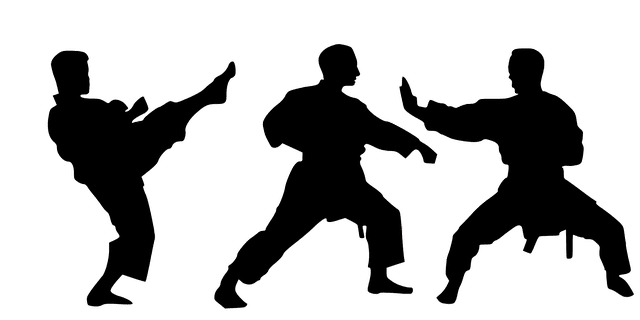
Each of the belts represents a degree of knowledge, called a kyū (級), a Japanese term meaning grade, level, or degree.
The World Karate Federation (WKF) governs international karate and the belt system in this sport is unified.
Origins of Belts in Martial Arts
Oriental martial arts have been practiced in the Far East for centuries, but the belt system is a relatively new phenomenon, just a little over a century old. Before belts were introduced, martial artists handed out certificates (or diplomas) to students who had reached a certain level of knowledge and ability.
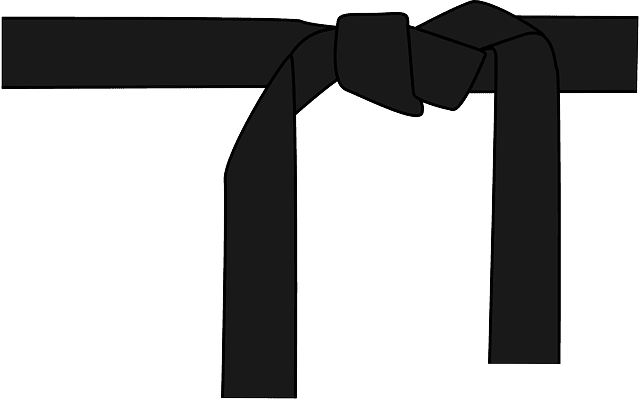
But, at the turn of the 20th century, a man called Jigorō Kanō, best known as the founder of judo, decided to introduce colored belts in his art. This was not a completely original idea, as a similar system inspired him in the Japanese board game of go (similar to chess), but it was a revolution in martial arts.
The essential idea behind the belt system was to enable students to advance more rapidly but also to enable fighters to quickly identify the level of knowledge their opponent has, thus leading to a more leveled field in potential combat. Kanō’s original colors were blue, white, brown, and black, but as the years passed, the system became more sophisticated and included a larger palette of colors.
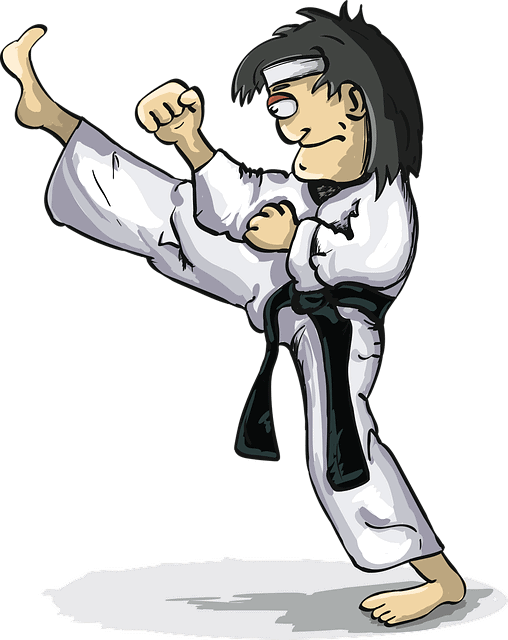
The colored belts in karate stem from 1924, when Gichin Fukanoshi decided to adopt Kanō’s degree system in karate. Thus, the kyū and dan systems were created for the sport of karate and they are both used today in karate schools around the world. Let’s deep dive into the Karate belt order and learn more about the Karate belt system.
There are some similarities between Karate and the Brazilian jiu jitsu system. There are no belt levels (for example, in Taekwondo, you can get a yellow belt with green tape, that is not going to happen in Shotokan karate, as Karate practitioners only get one of nine belts). The belt rank is described in the paragraphs below.
A profound comprehension of the karate belts and their significance—elaborated in the article you’re currently perusing—is indispensable for trainees embarking upon or occupied with their martial arts journey. However, understanding and mastering karate also involves taking control of your training conditions to minimize risks and potential injuries. To take a complementary step further, consider reading our detailed guide on the Best Karate Sparring Gloves. I assure you, the outlined sparring gear will secure your hands while allowing your karate skills to evolve.
The Belt System in Karate
There are two sets of belts in karate. The kyū set encompasses all the colored belts, and the dan set, encompasses different black belt degrees. The starting color is always white and the final level is a 10th-degree black belt.
The kyū system is designed for trainees called mudansha, meaning “those without a rank”. Each color symbolizes a trainee level and the degrees start from a higher number and advance to lower ones, just like in similar martial arts.
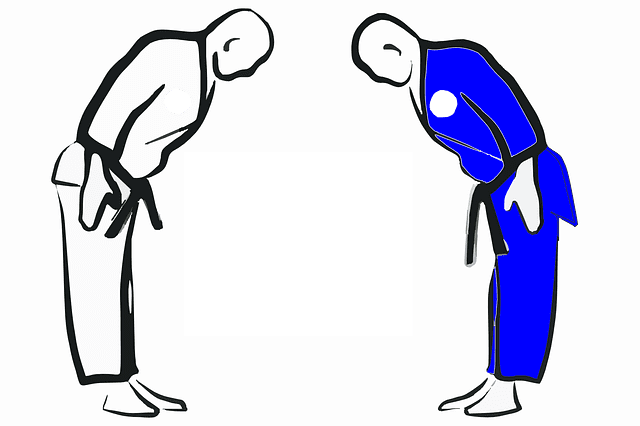
The lowest kyū is usually the 8th one (although there can be variations), designating a white belt, while the 1stkyū represents the highest rank a mudansha can achieve before obtaining a black belt; the 1st kyū belts are brown or under. Unlike some other Oriental martial arts (p.e. Taekwondo), each kyū in karate is represented by a different belt color.
The black belts are divided into ranks that are called dan (段) or, in English, degrees. The degrees start with the lowest number (1stdan or first-degree black belt) and reach the final, 10thdan (ninth-degree black belt), associated with the grandmaster title. Dan-holding karateka is called yudansha, meaning “those who hold a rank”.
In karate, only the first five or six dan ranks are truly competitive and are given after examinations (promotions) by higher-ranked karateka. In contrast, ranks from 7 to 10 are usually honorary and are given either on a merit-based system or after reaching a certain age. What does that mean?
Well, in many styles of Karate, you cannot get a red or brown belt until you’re 18 or 20 years old, depending on the rule set. You can be the world champion, but the rules are the same for all Karate students.
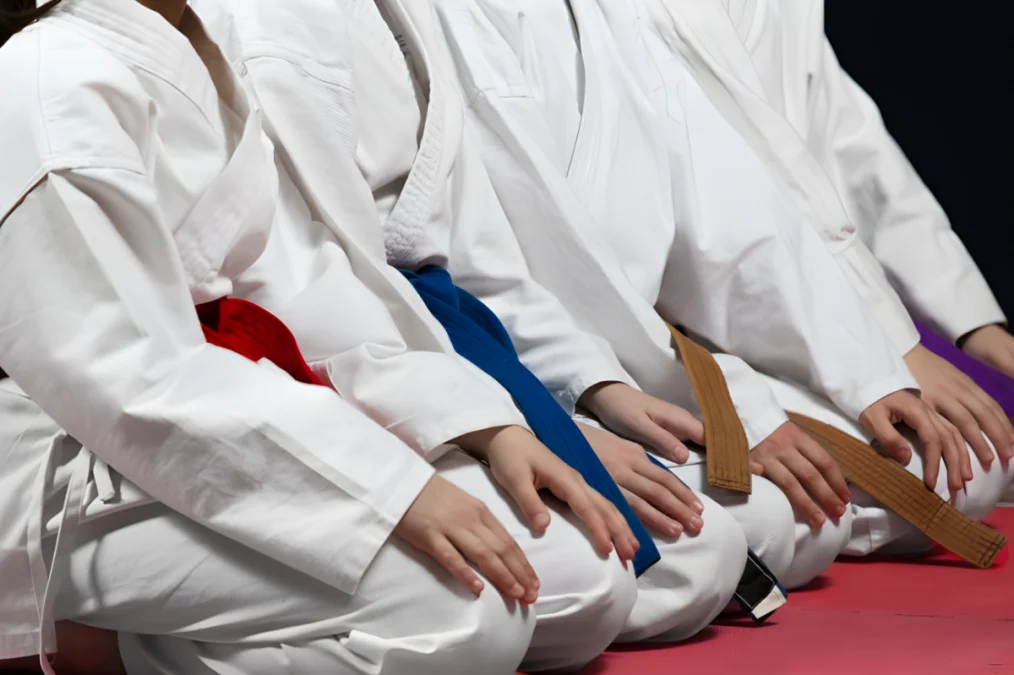
How to Achieve a Higher Rank in Karate?
The process of attaining a higher rank is called a promotion or examination. Each trainee starts with the mandatory white belt and ranks higher through promotions.
The promotion process gets more difficult as the ranks become higher, but it is usually a presentation of technical and tactical skills the trainee has learned throughout the training process.
Lower ranks in karate are more focused on balance, stance, and coordination issues, while more complex elements, like speed and power, are added later on.
Advancing through the lower kyū ranks usually requires mastering the basics of karate and applying them. The green belt is the first belt that demands a more practical application of the karateka’s skills.
As the karateka advances, the examinations usually add more complex techniques but can also include sparring, simulated sparring, self-defense, and breaking skills. Although the WKF has a system of guidelines, each school can have variations of the minimal standards.
The time necessary for promotion depends on the school, the national federation, and the rank in question. Lower ranks are usually attained after a few months (1-3) in rapid progression, while higher ranks usually require a certain period to pass before trying out for promotion.
There are some cases where promotion from rank one to rank two is given automatically, while others require a regular promotion. The period between promotions can range from one month to a few years. Each school and/or national federation determine those periods.
Karate Belt Order: Colors Ranked
The system of belts in karate is divided between 8 kyū (in general) and 10 dan degrees. The dan degrees are, like in Taekwondo, not that interesting, because they’re all represented by a black belt and we’ve already discussed how the ranks are achieved. The dan itself is represented by white stripes on the black belt, each stripe representing one dan.
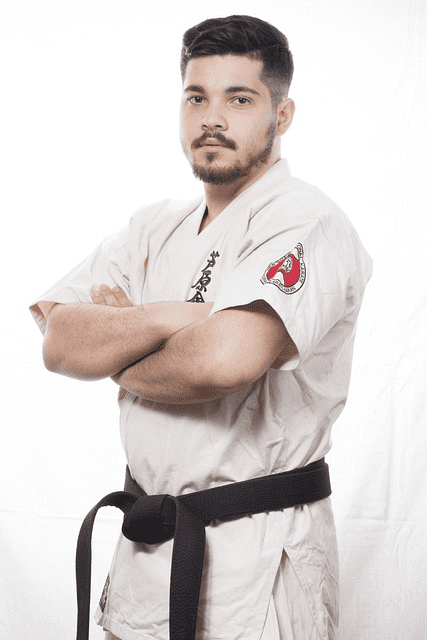
Each dan also has a specific Japanese name (p.e. the 5th is called godan, the 8th is called hachidan, etc.). Dan ranks are usually attained until a yudansha reaches the hachidan level, while kyu dan (9th) and judan (10th) ranks are exceptionally rare, even among life-long practitioners.
As for the kyū degrees, although there can be variations based on the school, the usual number is eight, starting with the 8th kyū (white belt) and ending with the 1st kyū (brown belt), after which one can try out for the black belt. The colors are always unique for each kyū (there are no striped variations like in Taekwondo).
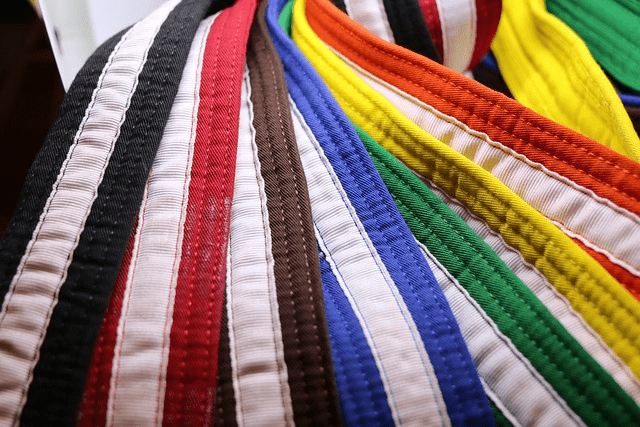
In this article, we will analyze the system based on eight degrees, while stressing that schools can use fewer colors than eight.
Also, the order of colors is usually fixed, but we must stress that there can also be some variations in the order, based on the school.
White Belt – 8th Kyu – The Birth Of A New Light, Which Reflects All The Cool Colors
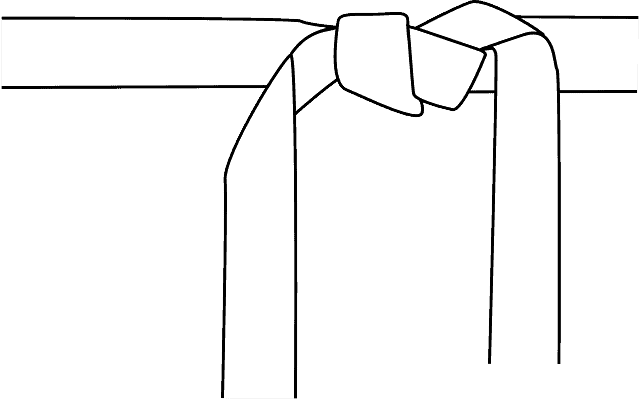
It is a person who wants to start learning Karate and deal with new challenges. Even when you come from a different striking background, you will get a white belt because you have never trained the Shotokan karate, Okinawan karate, or whichever style you’ve chosen.
The colored belt system kicks off with a white belt, and you are the “Mr. New Beginning”. Get ready to learn, and white belt is the lower belt color one gets when he joins any dojo. Even the most skillful kickboxer or a Muay Thai fighter gets his white belt upon joining the local school.
Yellow Belt – 7th Kyu – The First Ray Of A Rising Sun
The Karate student’s mind is finally open to new changes and challenges. The yellow belt means you’ve learned basic techniques and blocks. Yet, it comes immediately after the white belt, so you don’t know too much yet.
The yellow belt can mean that you’re an advanced beginner, a fighter who knows to defend easy-to-see hooks, haymakers, or kicks.
But a yellow belt doesn’t mean you’ll throw spinning hook kicks or powerful front kicks to the face of the moving opponent. Belt levels exist for a reason.
Orange – 6th Kyu – The Spreading Light That Widens Horizons
The spreading of the light of the Earth (orange belt) means the student is advancing in all fighting areas. Right after the yellow belt, it’s time to get more technical.
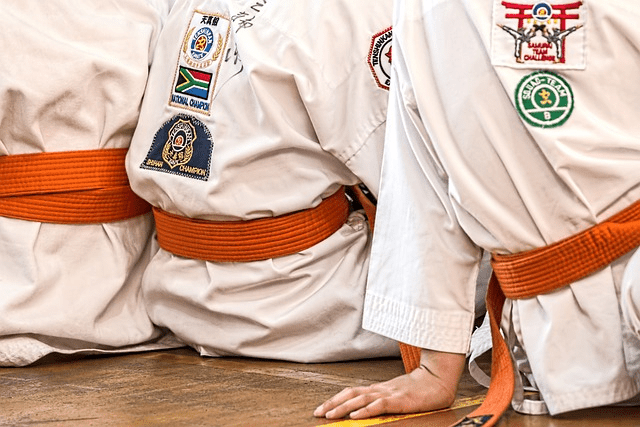
If you reached an orange belt, it means that your strikes have more power, plus, an orange belt means you can start learning combos, defend and counter (some simple moves), and start thinking about potential fights in the future. You’re not a yellow belt anymore.
Green Belt – 5th Kyu – Penetration And Growth Of Seeds And Plants That Want Sunlight
The next belt in Shotokan karate is a green belt. The green belt in Karate depicts the penetration of stems and roots of the plant to get the sunlight – it is time to watch towards the sky!
The student is developing a new skill set, and he’s not a beginner anymore. He can connect combos, unload big bombs, defend efficiently, and participate in fun competitions with a green belt. But you’re not a Karate master right after the orange belt; stay patient!
Blue Belt – 4th Kyu – The Fruits Of The Sun Are Reaching For The Endless Sky
After the green belt, the student goes deeper into the understanding of the name. You are creating your fighting style with a blue belt; you might become a defensive or offensive-minded guy. You can learn to transition from defense to offense in a split of second.
With an orange belt, you don’t have a deep understanding of the game, but the blue belt knows which techniques are going to work for him, when, and how.
Plus, the blue belt is the earliest moment when Karate can become your lifestyle. Imagine the plant growing towards the sky and the creation of the fruit – that’s the symbol behind your blue belt.
Purple Belt – 3rd Kyu – A Degree Of Seriousness And Commitment
Are you looking to pursue your Karate career? Would you like to become a black belt? The purple belt is the clear difference between an intermediate and an advanced practitioner.
The purple belt means you are very serious about the upcoming belt. The blue belt was the final stage of an intermediate, you are a dedicated black belt candidate now. The fruit is growing. 🙂
Brown Belt – 2nd Kyu – Symbol Of Depth And Profoundness Of The Student’s Knowledge
The plan is full-grown and ready for harvesting – the brown belt after the purple belt says you are ready for combat.
Black Belt – 1st Kyu – A Dark Shadow Behind A Glowing Object
The depth of the knowledge and the ability to give those a successful direction. Congrats on reaching the highest kyu level and Karate belt!
Black Belt Dan Degrees
We’ll also bring you the Japanese names of all the dan’s degrees. For the 1st dan, you can get a recommendation by Prefectural HQ or Branch dojo or group. For each next, from 2nd to 5th dan, you must get recommended by the National (Prefectural) HQ or Regional HQ, but you must get approval from the Tokyo JKA HQ.
Also, there is one more significant rule – when you reach the first dan, you must have it for at least one year before you test yourself before the commission for the 2nd dan. You must wear second dan for at least 2 years before you advanced to the 3st etc.
Tokyo JKA HQ gives the 6th dan, while you must be 50+ years old for the 7th dan. There is a special ruleset for 8th, 9th, and 10th dan – you must be 60+ years old, and you must get a recommendation from Instructor Committee.
Frequently Asked Questions about Karate belts order
What is The Karate Belts Order?
The karate ranking system consists of 8 belts in different colors. Ranging from beginner belts to more advanced ones, karate belts’ order colors are as follows: white, yellow, orange, green, blue, purple, red, and brown.
Note: white belt means you know nothing, in theory, but you can be a striking wizard if you come from a different martial art. It means you didn’t earn any level in one of the most famous Japanese martial arts.
What belt is the highest in karate?
The Karate red belts signify exemplary knowledge of skills, a high level of competence, contribution to the art through teaching, and an excellent reputation gained over the years.
What does the white belt symbolize in the karate journey?
The white belt symbolizes the beginning of a karate journey, representing a lack of prior knowledge or skill in martial arts. As the student progresses through the different colored belts, such as blue, green, yellow, brown, and purple, they develop their skills and knowledge, eventually reaching mastery, represented by the black belt.
What are the differences in skill level between the different colored belts in karate, such as blue, green, yellow, brown, and purple?
As students progress through the colored belts, they are expected to demonstrate a higher level of skill and knowledge with each new belt. For example, a blue belt level may represent a good foundation of basic techniques, while a green belt may indicate a more advanced understanding of the art. The higher belts, such as brown and purple, represent even greater mastery and skill.
How does the ranking system in modern karate compare to traditional karate?
In traditional karate, it could take many years, even decades, to achieve a black belt. In modern karate, the ranking system may be faster, but the emphasis is still on demonstrating mastery of the art rather than just completing a set number of classes or a certain amount of time. Regardless of the specific system, all karate styles emphasize the development of skills and knowledge through the karate journey.
What are the different karate styles, and how do they award belts?
There are many different styles of karate, including Shotokan, Goju-Ryu, Shito-ryu, and Wado-ryu, and each may have slightly different systems for awarding belts. However, the basic concept of progression from white to black is generally the same across styles, representing the development of skills and knowledge over time. Regardless of the specific style, the ranking system is an important part of the karate journey and helps to keep students motivated and focused on their goals.
What Belt Was Bruce Lee?
Interestingly, Bruce Lee has never had a belt in Karate, nor was he a black belt in any discipline. His basic techniques come from Wing Chun, which he learned from the famous Ip Man.
